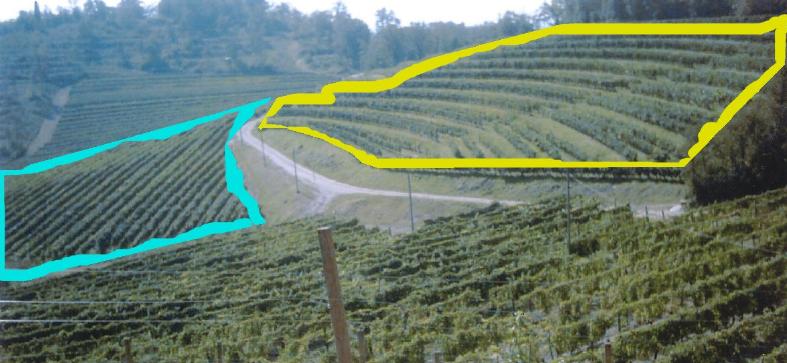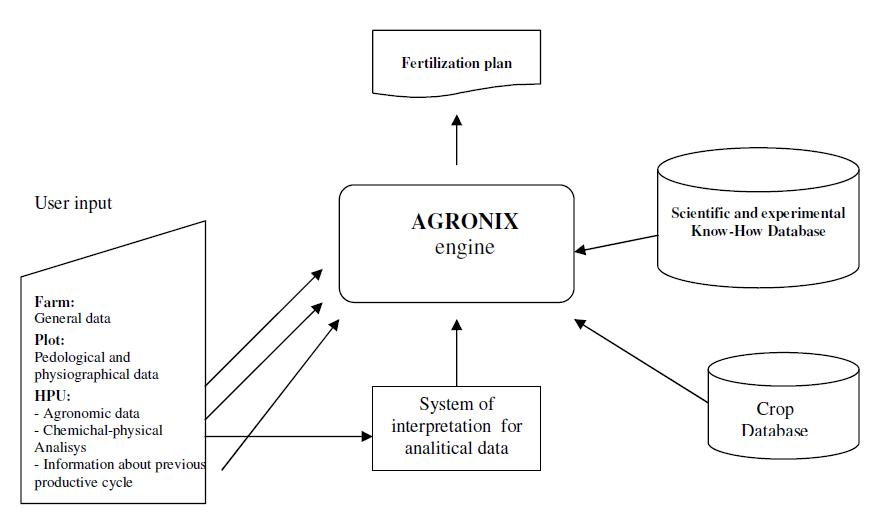AGRONIX
online service
An advanced tool for the calculation of fertilization plan
| Home |
| The Service |
| Examples |
| Quick help |
| Log in |
| Scientific abstract |
| Contact |
Via Cairoli, 71 - 97100 RAGUSA (RG)
Tel. 0932.686192 - Fax 0932.655840
E-mail: adm@adm.it
“The secret of happiness
is not in doing what one likes,
but in liking what one does.”
James M. Barrie
![]()
System functionality
More than twenty years experience in using the homonymous stand-alone software and adopted by hundreds of technicians and farms across Italy, AGRONIX, differently from the previous version, refines its calculations by using functions capable to model more closely the rates of absorption of nutrients and more integrate the multiple factors that influence the production.
Every crop manifests different productive responses not only for the soil nutrient availability but also for
particular pedological and climatic conditions (microclimate) of the area where the crop is cultivated. In
addition the particularities of the agricultural practices adopted that may positively or negatively affect the
general welfare of the plant.
This is demonstrated by the fact that AGRONIX has been selected by the leading European Research Center on plant nutrition (CEBAS - CSIC in Spain), by the development services of the Brazilian Ministry of Agriculture and by research organizations authorized by the FAO. Currently approximately 180 installations are operating in Italy distributed among private and public companies, as INEA, REGIONAL DEVELOPMENT AGENCIES, AGRARIAN SCHOOLS, COOPERATIVES, FERTILIZER INDUSTRIES, PROFESSIONALS, NURSERY INDUSTRIES AND LABORATORIES OF SOIL ANALYSIS.
AGRONIX has the aims to collect as much information as possible. The farm land is logically divided (mapped) into plots and these in homogeneous production units (HPU). Data of plots are used to provide information on farm’s lands uniform for soil characteristics (presence of skeleton, structure,depth of soil, etc. ..) and for physiography (morphology, exposure, etc ...).
The HPU is the part of the plot that is uniform for physical, chemical and biological characteristics, crop, variety (rootstock) and production technique. The distinction in homogeneous production units can assess the best responses of the crop production depending on the characteristics of the land itself and of cultural practices applied by the farmer.

The part in yellow and blue of the photo represent the same plot homogeneous in terms of
physiography and pedology (same type of soil, same exposure, etc. ..) but consists of two different
production units: the yellow one consist of Chardonnay on 420A rootstock and the blue one of
Chardonnay on 1103 P rootstock. Assumed that both units have a land with the same chemical and
physical characteristics and that they are processed with the same cultivation operations
(mechanical tillage, trellis systems etc ...), the vegetative and productive response will be different
because different are the rootstocks (slightly vigorous rootstocks of the first unit and vigorous of the
second one) grafted on the same variety. So the collection of detailed information per unit becomes
crucial for the system to generate the proper fertilization advice respectful of the needs of the crop.
| Plot | Homogeneous Productive Unit (HPU) |
|---|---|
| Orography (hill, plane, altopiano etc..) | Geografic coordinate |
| Soil position | If irrigated: irrigation system |
| Soil exposure | Crop |
| Distance from sea | Variety |
| Windbreak | Rootstock |
| Drainage | Productive cycle |
| Structure | Mulching/Cover crop system |
| Hydraulic accomodation | Plant density |
| Extraordinary operation | Extimated production |
| Depth of the soil and of tillage | Subject to EC regulation |
| Water provision | Physico-chemical properties (sand, lime�) |
| Water class | Soil structure (pH, conducibility, Organic matter, Total lime�.) |
| Belonging to nitrate vulnerable area | Cation Exchange Capacity and Cation Balance (Ca++, K+,Na+,Mg++) |
The fertilization advice is influenced also by the knowledge of growing, production and quality trends of
previous years that enriching the knowledge base of the system, allows the detection of anomalies that does
not necessarily depending on nutritional imbalances, but on the use of inappropriate agricultural practices,
diseases arising, unpredictable factors or local connotation.
From knowledge comes new knowledge able to relate more specific factors and likely to generate a system
of recommendations appropriate to the particular production.

The result is a fertilization plan perfect in terms of quality and production needs as well as the
optimization of resources. It is provided to the user in pdf or in odt (open office extension) format
related to the single homogeneous production unit. The fertilization plan is a detailed document that
includes:
- - Summary data for the homogeneous production unit (HPU)
- - Physical-chemical soil data and agronomic interpretation of results
- - Fertilization plan with nutrients distribution splitted up in different periods of intervention
- - Recommendations on how to distribute the fertilizers
- - Recommendations on types of fertilizers to use
- - Maximum contributions permitted by law (based on European directives or production
disciplinary) if the production is subject to constraints.
AGRONIX is usable by all those involved in the planning of production and that are able to collect data on
productive and qualitative outcomes obtained as a result of such programming (farmers, technicians,
agronomists, etc. ...). The production and quality outcomes as well as the indication of the given fertilizers
provide the information more interesting for the generation of new knowledge in the system that will take
into account in subsequent planning. Everyone can contribute to the creation of new knowledge: more the
data are reliable even more such data will contribute to the identification of specific events related to the
territory and the local microclimate.
Besides this, AGRONIX determines, in accordance with Community, national and regional laws (Nitrates
Directive, rules of good agricultural practice, disciplinary of production) and only if it required by the user,
what are the limits of contributions of some elements. In this way the user will know what the real needs are
for his production in terms of nutritional needs and at the same time what are the production constraints
imposed by current regulations.
AGRONIX will be free available on Internet after registration. It will be enough to fill a form: an email confirmation will be sent to the applicant that can immediately access to the service.
AGRONIX on-line originated as a support tool for crop fertilization but will not stop to this. New
services are already implementing to offer further assistance to farms.
Closely related to the fertilization will be the agri-irrigation plan, which, supported by private or
public agro-climatic monitoring, will allow irrigation techniques suitable for an optimized use of
water resources up to enable controlled deficit irrigation management or partial root drying
techniques.
Information on cultivation techniques, fertilization and the pesticide treatments will be collected by a special register (a request) to be used not only for regulatory purposes (European Union) but also to document the traceability of agricultural products.
